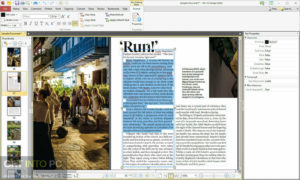
- #PDF XCHANGE EDITOR HOW TO SET UP EMAIL CLIENT PDF#
- #PDF XCHANGE EDITOR HOW TO SET UP EMAIL CLIENT WINDOWS 10#
- #PDF XCHANGE EDITOR HOW TO SET UP EMAIL CLIENT WINDOWS#
This is because the setting is stored in the HKEY_LOCAL_MACHINE subtree in the registry. However, if you are not a member of the local administrators group, you may not have the appropriate permission to make this change.
#PDF XCHANGE EDITOR HOW TO SET UP EMAIL CLIENT WINDOWS#
#PDF XCHANGE EDITOR HOW TO SET UP EMAIL CLIENT WINDOWS 10#

Note If you are unsure about which email clients are registered on a workstation, examine the keys under the following subkey in the registry. (The default selection is Microsoft Outlook.) Specify the default email client to be configured by this policy. Then, clear the Only show policy settings that can be fully managed check box. For example, in Windows Server 2003, select Filtering on the View menu. Note If you do not see the Default e-mail client policy setting in the details pane of the Local Group Policy Editor, make sure your Group Policy editor filtering settings are not hiding unmanaged policies. In the details pane, double-click the Default e-mail client setting. In the policy tree, select the Default e-mail client policy node. Under Computer Configuration, expand Administrative Templates.

For more information, consult your Windows documentation. Note The steps to add the DefaultEmailClient.adm file in the Local Group Policy Editor vary. Labeltext_Default_Client="Default E-mail Client:"Īdd the file to the Local Group Policy Editor. To do this, follow these steps:Ĭopy and paste the following text into the text file: CLASS MACHINEĭefault_E-mail_Client="Default e-mail client policy"Įxplain_Default_Client="This policy configures Outlook as the default e-mail client" Then, add this template to the Local Group Policy Editor so that you can configure the policy setting. To configure the default email client by using Group Policy, create a custom.

#PDF XCHANGE EDITOR HOW TO SET UP EMAIL CLIENT PDF#
After changing the image, it is re-embedded in the PDF file. In the case of an image, the default application (Photoshop on my set-up) opens the image. MailTo links will now open an Outlook email message. Once this has been defined, you can use the Touchup Object Tool to select an object, context-click it and select the Edit option. This policy works only for domain-joined clients.Īfter this policy is set, the default application associations will be applied after the user signs in again.


 0 kommentar(er)
0 kommentar(er)
